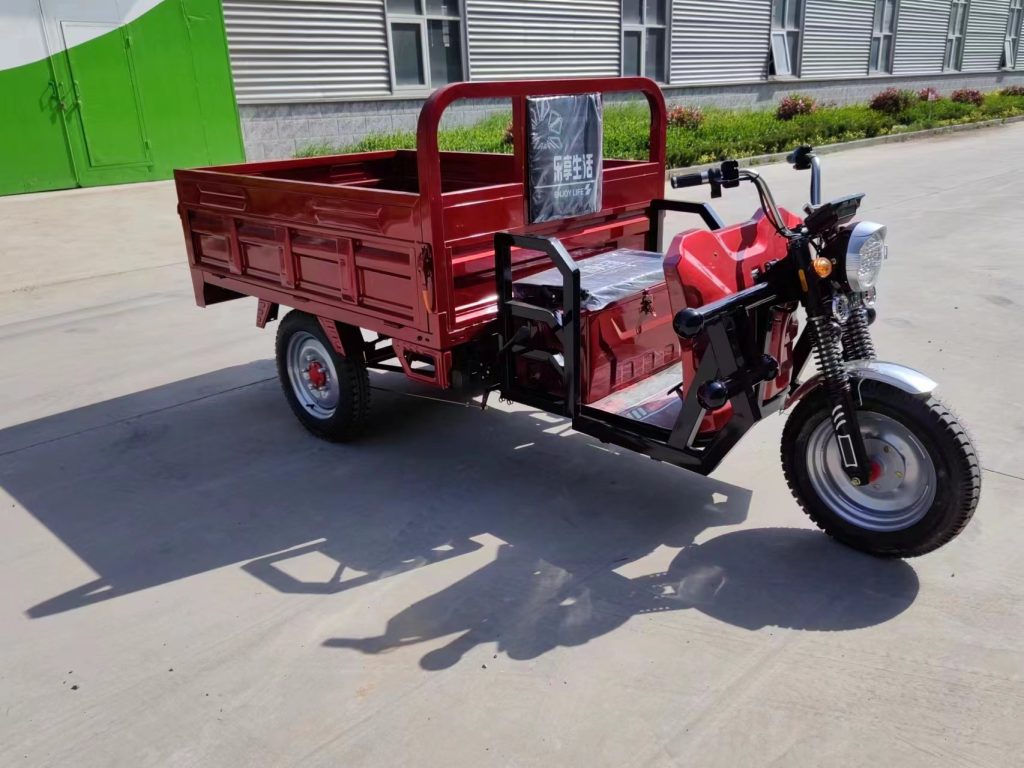Recently, the world’s destinations have had to grapple with the issue of tourist convenience versus sustainability. While they become more environmentally aware, most tourist destinations and sightseeing spots have been turning towards green modes of transport. Of these options, electric trikes, or the electric cargo tricycles, have been rising to become efficient and eco-friendly alternatives for tourist destination logistics.
Why Tourist Destinations Need Electric Trikes
Tourist destinations usually have crowded paths, pedestrian streets, or eco-sensitive corridors where large vehicles are inappropriate or unacceptable. Common fuel-guzzling vans and trucks not only pollute the air and create noise pollution but also mar the tourist atmosphere. Electric cargo tricycles do the job.
These compact automobiles do not have difficulty navigating thin roads, delivering goods without disrupting holidaymakers, and reducing carbon emissions by incredible amounts. Electric trikes are helping to preserve the serene and beautiful atmosphere tourists desire in town centres, national parks, or seaside resorts.
Applications of Electric Cargo Tricycles in Tourist Areas
1. Hotel and Resort Transportation
Hotels and resorts along tourist areas are always in need of uninterrupted transportation of items such as cleaning supplies, food, beverages, and guest luggage. The application of electric cargo tricycles ensures that these items are transported efficiently without generating much noise or pollution.
2. Street Vendors and Local Businesses
Retail outlets, tourist spot stalls, and souvenir stalls often need to be restocked daily. Electric trikes allow suppliers to deliver goods to given areas, even through people-thick lanes, without getting held up in traffic.
3. Waste Collection and Recycling
Tourist attractions that are open to tourists generate a good deal of trash, from food packaging to throwaways. The electric tricycles for cargo can be equipped with waste-container vehicles to collect trash quietly and effectively, and return recyclables.
4. Tourist Aid Services
They are set elsewhere to transport tourists’ luggage, offer mobility aid to seniors, or as mobile cart vendors, bringing convenience and enjoyment to the tourist experience.
Environmental and Economic Advantages
The advantages of electric trikes in holiday resorts go beyond functionality. These vehicles, in fact, add to the sustainability goals of most resorts. They do not emit tailpipe emissions, which reduces the ecological footprint of tourism. They also travel nearly soundlessly, which assists in preserving the tranquil nature of cultural sites and natural wonders.
From an economic perspective, electric cargo tricycles can function as effective alternatives to traditional delivery vans. Because they have lower operating and maintenance needs, low fuel costs, and long working lives, they are good investment options for tourism enterprises. As a bonus, tourist attractions using electric mobility options enhance their reputation as green and environmentally friendly, and therefore become more appealing to green consumers.
Case Examples of International Tourism
- European Heritage Sites: Historic urban areas in Florence and Amsterdam restrict access by large vehicles. Electric tricycles for cargo are on the streets today, delivering provisions to restaurants, museums, and gift shops.
- Asian Tourist Towns: In Chinese and Southeast Asian tourist destinations, electric trikes are ubiquitous for the delivery of food provisions to night markets and for transporting maintenance tools to theme parks.
- National Parks and Eco-Resorts: Electric trikes are most commonly found in eco-resorts and national parks, which use them to minimize the human footprint while maintaining sustainable operations without interfering with wildlife and travelers.
Future Outlook
As the global tourism industry continues to grow, there will be an increasing need for sustainable and efficient transportation. Governments and tourism organizations are already encouraging electric mobility. Electric delivery tricycles will become increasingly advanced with more extensive battery packs, smart navigation, and modular cargo design tailored to touristic services.
In the long run, such destinations that adopt electric trikes in their businesses will not only become more efficient but also better green leaders in tourism. Such a transformation is in line with the growing desire of tourists towards eco-friendly and socially responsible tourist destinations.
Conclusion
Electric mobility is no longer a fad but a reality in modern tourism. By adopting electric trikes and especially electric tricycles for load-carrying, travel destinations can choose to plot smoother operations, cleaner horizons, and healthier travelers. For hotel supply chains, garbage management services, or vendor support, electric cargo tricycles are becoming priceless allies in building the future of ecotourism.

 Instant
Quote
Instant
Quote Email
Us
Email
Us